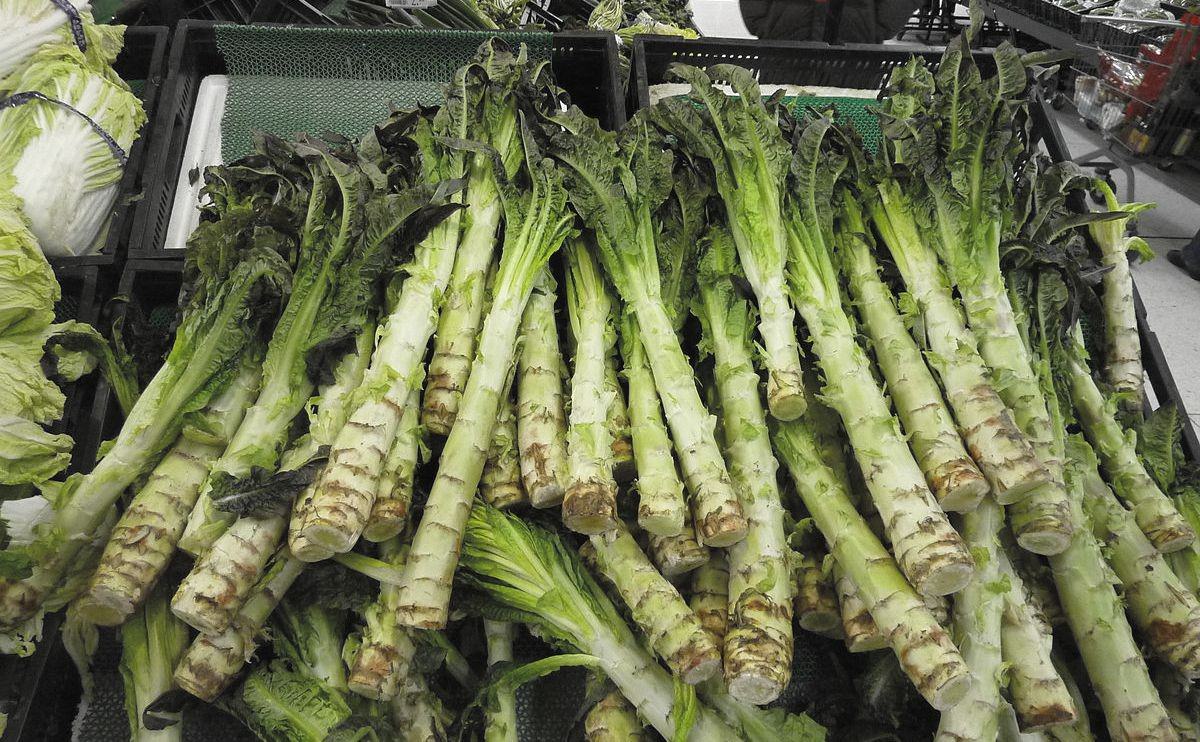
Celtuce, also known as stem lettuce or asparagus lettuce, is a unique vegetable that combines the best of both worlds: the crispness of lettuce and the earthy flavor of celery. Originating from China, this versatile plant has been a staple in Asian cuisine for centuries. But what makes celtuce so special? Its thick, crunchy stem and tender leaves offer a delightful texture and taste, perfect for salads, stir-fries, and even pickling. Rich in vitamins and minerals, celtuce is not only delicious but also nutritious. Ready to learn more about this fascinating vegetable? Let's dive into 20 intriguing facts about celtuce that will leave you eager to try it in your next meal!
Key Takeaways:
- Celtuce, a unique vegetable popular in Chinese cuisine, is rich in vitamins and minerals. Its stem and leaves are edible, and it can be grown easily at home for multiple harvests.
- With a mild, nutty flavor, celtuce can be eaten raw or cooked, adding a refreshing crunch to salads and stir-fries. It's low in calories, high in fiber, and supports bone health.
What is Celtuce?
Celtuce, also known as stem lettuce or asparagus lettuce, is a unique vegetable that combines the characteristics of lettuce and celery. It's popular in Chinese cuisine and is gaining attention worldwide for its versatility and nutritional benefits.
-
Celtuce is a type of lettuce: Unlike traditional lettuce, celtuce is grown for its thick, crunchy stem rather than its leaves.
-
Originates from China: This vegetable has been cultivated in China for centuries, where it is known as "wosun."
-
Two parts are edible: Both the leaves and the stem of celtuce can be eaten, though the stem is more commonly used in cooking.
-
Rich in nutrients: Celtuce is packed with vitamins A, C, and K, as well as minerals like calcium and iron.
How to Grow Celtuce
Growing celtuce is relatively easy, making it a great addition to home gardens. Here are some interesting facts about its cultivation.
-
Prefers cool weather: Celtuce thrives in cooler temperatures, making it ideal for spring and fall planting.
-
Grows quickly: This plant matures in about 70-90 days, allowing for multiple harvests in a single growing season.
-
Requires well-drained soil: For optimal growth, plant celtuce in well-drained soil with plenty of organic matter.
-
Needs regular watering: Keep the soil consistently moist to ensure healthy growth.
Culinary Uses of Celtuce
Celtuce is incredibly versatile in the kitchen. Its unique flavor and texture make it a favorite among chefs and home cooks alike.
-
Can be eaten raw or cooked: The stem can be sliced thin and added to salads or stir-fried for a crunchy texture.
-
Popular in Chinese cuisine: Often used in stir-fries, soups, and pickled dishes, celtuce adds a refreshing crunch.
-
Leaves are also edible: Though less commonly used, the leaves can be sautéed or added to soups.
-
Mild, nutty flavor: The stem has a mild, nutty taste that pairs well with a variety of ingredients.
Nutritional Benefits of Celtuce
Celtuce is not just tasty; it’s also incredibly nutritious. Here are some health benefits you might not know about.
-
Low in calories: With only about 18 calories per 100 grams, celtuce is a great option for those watching their weight.
-
High in fiber: The fiber content helps with digestion and can keep you feeling full longer.
-
Rich in antioxidants: Vitamins A and C in celtuce act as antioxidants, helping to protect your cells from damage.
-
Supports bone health: The calcium and vitamin K in celtuce contribute to strong bones.
Interesting Facts About Celtuce
Here are some fun and lesser-known facts about this fascinating vegetable.
-
Also called "Chinese lettuce": In some regions, celtuce is referred to as Chinese lettuce due to its popularity in Chinese cuisine.
-
Can be grown hydroponically: Celtuce adapts well to hydroponic systems, making it a good choice for indoor gardening.
-
Used in traditional medicine: In Chinese medicine, celtuce is believed to have cooling properties and is used to treat various ailments.
-
Grows up to 2 feet tall: When fully mature, celtuce plants can reach heights of up to 2 feet, making them quite impressive in the garden.
Final Thoughts on Celtuce
Celtuce, also known as stem lettuce, offers a unique blend of flavors and textures that can elevate any dish. This versatile vegetable, with its crunchy stems and tender leaves, is packed with nutrients like vitamins A and C, fiber, and antioxidants. Whether you’re stir-frying, pickling, or adding it to salads, celtuce brings a refreshing twist to your meals. Its low-calorie content makes it a great choice for those looking to maintain a healthy diet. Plus, growing celtuce in your garden is relatively easy, making it accessible for home gardeners. So, next time you’re at the market, give celtuce a try. You might just find a new favorite vegetable that not only tastes great but also boosts your health. Happy cooking!
Frequently Asked Questions
Was this page helpful?
Our commitment to delivering trustworthy and engaging content is at the heart of what we do. Each fact on our site is contributed by real users like you, bringing a wealth of diverse insights and information. To ensure the highest standards of accuracy and reliability, our dedicated editors meticulously review each submission. This process guarantees that the facts we share are not only fascinating but also credible. Trust in our commitment to quality and authenticity as you explore and learn with us.


